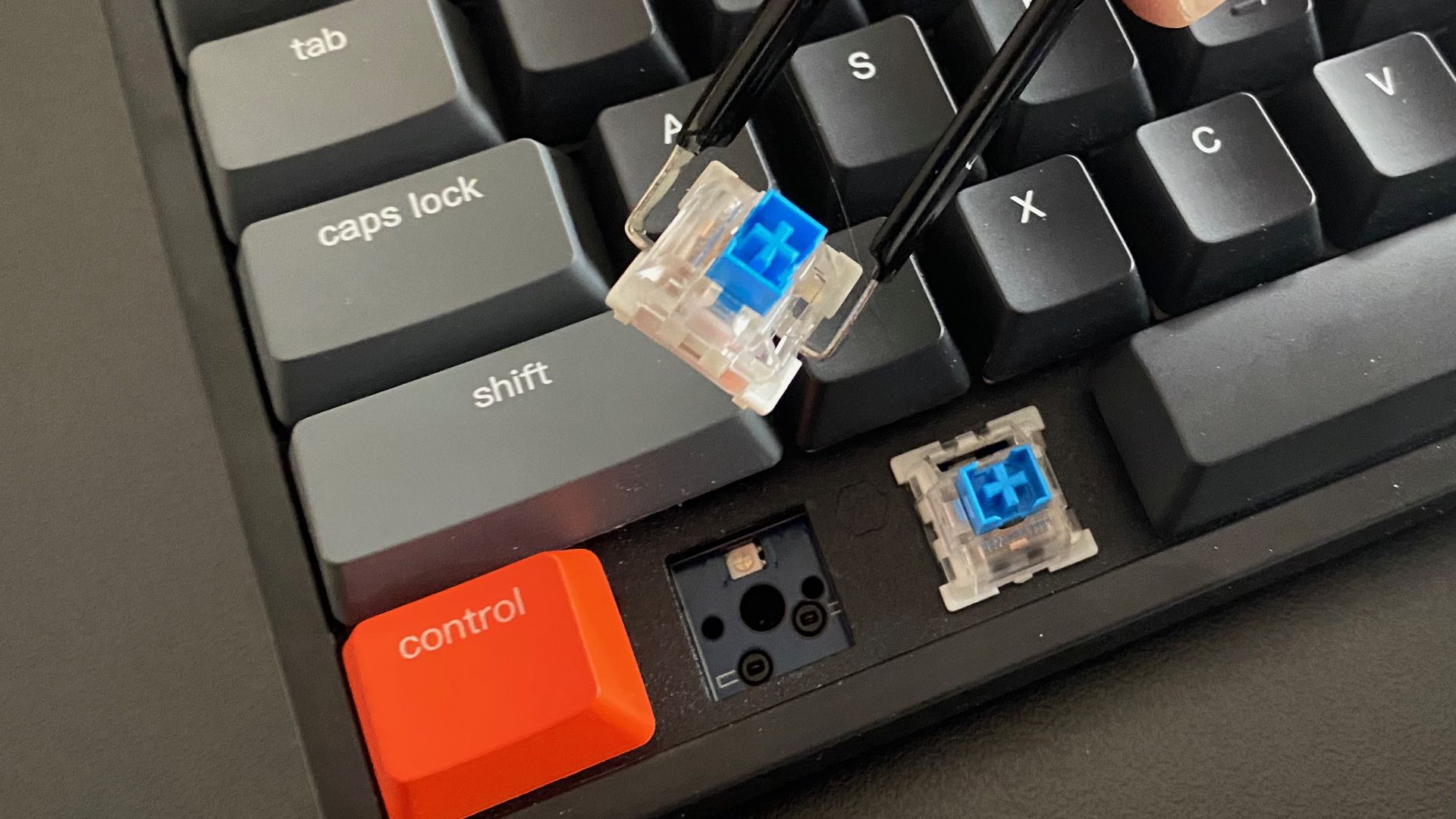Key Takeaways
- Mechanical keyboards generally come with keycaps made of ABS or PBT, with PBT typically being the quieter option.
- You can define keycap profiles by their height, with taller keycaps usually being louder.
- There are also multiple mechanical keyboard switch types—clicky switches are intentionally noisy.
Many people strongly prefer mechanical keyboards for the distinct typing feel they provide. Their trademark clicking and clacking can be a dealbreaker, though, if you are shopping for a new keyboard to use in a shared space. Luckily, there are ways to get an idea of how noisy a mechanical keyboard will be before you buy.
Check the Keycap Material
Mechanical keyboards generally feature keycaps made of either Acrylonitrile Butadiene Styrene (ABS) or Polybutylene Terephthalate (PBT). Checking the keycap material is one of the first things to do when comparing keyboard options as it impacts durability, price, and even typing volume.
Keycaps made of ABS are more affordable but less durable. ABS is also a relatively soft material, resulting in a high-pitched sound when the cap hits the frame of your keyboard when typing. Some options, like the Kensington MK7500F QuietType Pro Silent keyboard, feature dampening pads to reduce the sound created by their ABS keys.
By comparison, PBT is a dense and durable keycap material. The density of a PBT keycap results in a deeper sound with less rattle when typing, making it preferable for those who find high-pitched typing to be grating. It is worth noting that replacing keycaps is a fairly simple process.
Choose the Right Keycap Profile
The profile, or overall shape and height, of a keyboard’s keycaps can also greatly affect the sound produced when typing. This is largely because the amount of force and effort a person exerts on the keys while typing is likely to change based on the keycap profile.
The main keycap styles and their defining features are:
- SA: High profile height, angled and concave shape
- OEM: Medium profile height, angled shape
- Cherry: Medium profile height, angled shape
- XDA: Low profile height, concave shape
- DSA: Low profile height, concave shape
Keycaps with a higher profile produce a louder sound when they bottom out, or hit the base of the keyboard, because they are taller and heavier. The benefits of low-profile keycaps include lighter weight and less finger movement to press the keys, which usually implies a quieter sound.
Putting sound aside, it is also important to consider how the height and shape of your keycaps, as well as the shape of the keyboard’s rows, will affect ergonomics and your ability to type quickly by feeling your way across the keyboard.
Don’t Overlook Keyboard Switch Types
When you focus on the shape, feel, and material of a mechanical keyboard, it can be easy to forget to “look under the hood,” so to speak. Beneath each keycap is the switch mechanism that registers your keystrokes on the keyboard’s circuit board. Keyboards that use this switch mechanism rather than a rubber membrane are less likely to strain your wrist because they encourage proper finger placement and reinforce good typing technique by providing tactile feedback. These ergonomic features represent the appeal of choosing a mechanical keyboard in the first place.
There are three main switch types, with each one affecting the sound of your typing in different ways:
- Linear switches provide no tactile feedback, meaning you will likely bottom out the keys as you type and produce a louder sound.
- Tactile switches do provide feedback when you press them enough to register a keystroke, meaning you might be less likely to bottom out the key and produce a loud sound.
- Clicky switches include an extra piece that generates an intentional click sound when you press them enough to register a keystroke, meaning you are even less likely to bottom out the keys but are certain to produce more noise when typing.
The purpose of tactile and clicky switches is to reduce effort and strain on your wrists by providing noticeable feedback so you do not have to press each key all the way down with each stroke. Clicky switches provide the most feedback, and the sound may be satisfying to some, but it is a counterintuitive choice if you are seeking a quieter mechanical keyboard.
There are times when the volume of one’s typing simply comes down to a heavy-handed style. If you are deciding if a mechanical keyboard is right for you, keep in mind that it can actually help you adopt a lighter touch and reduce wrist strain. If you are still searching for a mechanical keyboard that produces minimal sound, consider one like the LOFREE Flow84 with low-profile PBT keycaps and tactile switches.






